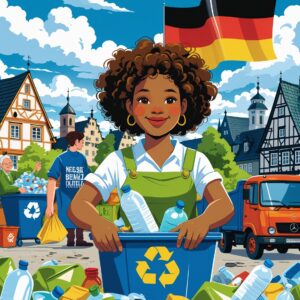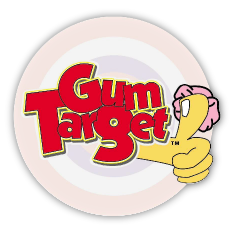The reuse and repair of items were built into everyday life in many cultures long before organized programs were established. Limited resources made it necessary to find clever third-time uses for objects, mend textiles, and give things that seemed worn out another life.
Japan emphasizes a philosophy called mottainai, which literally means “don’t be wasteful” but is more broadly a call to respect resources. Practical actions are therefore backed by this attitude, such as careful sorting and choosing critical durable goods rather than disposable conveniences. Many families have items in each stream having very simple names. Such ease-of-diversion would thus bring about cleaner streets and stronger material loops, supplying recycling centers and energy recovery facilities with plastics, paper, metal, and organics.
In India, informal networks of waste pickers and market traders keep the materials flowing back into usage. The kabadi-walas and local scrap markets are a crucial link in the chain, bringing back textiles, metals, and plastics into reprocessing streams. These everyday players run on knowledge and community trust, thus coexisting people-centered systems with formal recycling infrastructures. Craft traditions also play a role by making bags, quilts, and patches out of old fabrics that extend the life of garments.
In many African and Latin American communities, repurposing and construction with salvaged materials is widespread. Plastic bottles are substituted for bricks in small constructions, filled in roads, or used in art projects. Swings, planters, or covers for playgrounds are made from old tires.
How Nations Shape Recycling
Countries differ in how they design streams, charge for disposal, and hold producers accountable for the lifecycle of their products.
Source separation and extended producer responsibility are commonly relied upon in European countries. Packaging will have clear labels, and some areas require separate streams for plastics, metals, and paper. The Green Dot system—the symbol of packaging responsibility—shares the costs of collection and processing between retail outlets and manufacturers. This encourages manufacturers to create recyclable packaging and allows municipalities to operate efficient material recovery programs.
In some countries, there is a small refund on bottles and cans that are collected both at home and in stores. The simplicity of returning containers increases participation rates, lowers litter, and feeds a steady supply of raw materials for recycling plants. Deposit initiatives are complemented by robust recycling infrastructure and public education campaigns that keep the public engaged.
In many city systems, diverting organics from landfill wastestreams composting or anaerobic digestion. Pay-as-you-throw programs create a price signal that encourages waste minimization at the source. When people pay for each bag of garbage they generate, both household and business consumers tend to change buying habits and select packaging with a smaller environmental footprint.
In other parts of the world, producer responsibility is enshrined in policy. Extended producer responsibility (EPR) programs generally cover electronics, appliances, and tires, requiring brands to be responsible for funding the collection and recycling. That would shift some of the responsibilities from local government to manufacturers, who can design for easier recovery. The result is clearer product stewardship, higher recycling rates, and greater opportunities for manufacturers to innovate in end-of-life handling.
 Repair Culture, Makers, and Community-Based Upcycling
Repair Culture, Makers, and Community-Based Upcycling
In cities and towns worldwide, the culture of repair, reuse, and upcycling is growing. The grassroots movements thus make artful places where people learn to do minor repairs, redesign, or repurpose items rather than discard them. The result is less waste and more hands-on skills that remain with families and workers.
Repair Cafés began in the Netherlands and have since spread worldwide. These community hubs bring volunteers with repair know-how together with common goods in need of a fix. Participants bring in items such as appliances, furniture, and electronics. A team of specialists helps diagnose problems and guide repairs. Pay-as-you-throw programs create a price signal that encourages waste minimization at the source. When people pay for each bag of garbage they generate, both household and business consumers tend to change buying habits and select packaging with a smaller environmental footprint.
In other parts of the world, producer responsibility is enshrined in policy. Extended producer responsibility (EPR) programs typically focus on electronics, appliances, and tires. They require manufacturers to fund collection and recycling. That shift creates a partial shift of responsibility away from local governments to manufacturers, who have the potential to design for easier recovery. Among the results of this are clearer product stewardship, higher recycling rates, and greater opportunities for manufacturers to innovate end-of-life handling. Creative energy is one of the things furniture gets when old pallets are reused or worn fabrics are given new life by converting them into new textiles. These sessions often take place in schools, libraries, and cultural centers, making lifelong skills available and offering new entry points into the circular economy.
Items with a second life get on-stage local sellers and hobbyists, while shoppers explore creative redesigns. Upcycling markets cultivate a culture of reuse, giving people easy ways to find affordable, one-of-a-kind pieces.
Gum-Centric Recycling and Cross-Cultural Approaches
A shared challenge across many places is chewing gum litter, a stubborn micro-waste issue that sticks to sidewalks, benches, and transit stops. Although gum cleanups are common in most cities, some innovative moves around the world show how culture and policy can fight this sticky problem in fresh ways. The goal is to reduce litter, capture material value where possible, and prevent gum waste from becoming a nuisance in urban spaces.
Early-stage programs test whether chewing gum can be broken down into polymers or other additives that fit into existing recycling streams or asphalt mixtures. Although these pilots are in their early stages, the Air Carbon project demonstrates a great potential. The project is establishing a trend by creating circular material loops for gum waste as a resource.
In many cities, gum litter is battled through school programs, signage, and the simple introduction of dedicated disposal stations. Disposal habits matter and will improve when people have convenient choices for gum disposal and know something about environmental impact. Cleanliness and respect for shared spaces, therefore, become allies in the fight against litter. The cultural emphasis
Some areas study the imposition of targeted fees or deposits on gum packets and related packaging to encourage proper disposal. Clear labeling, disposal accessibility, and partnerships with local businesses to sponsor gum receptacles promote a cleaner urban landscape and a stronger, more visible waste-recovery culture. While gum-specific measures develop, the larger goal remains – make responsible consumption and litter prevention part of everyday life.



